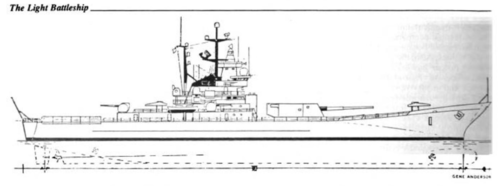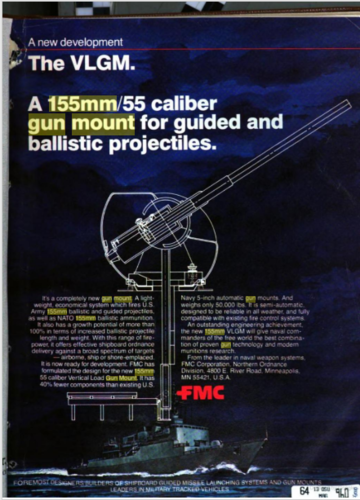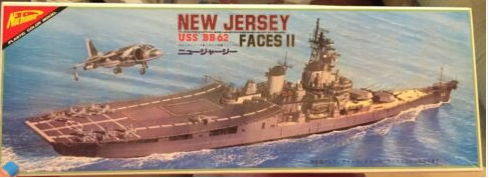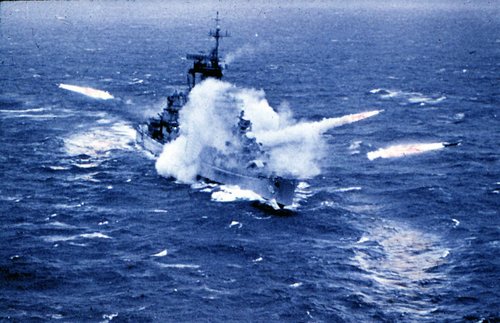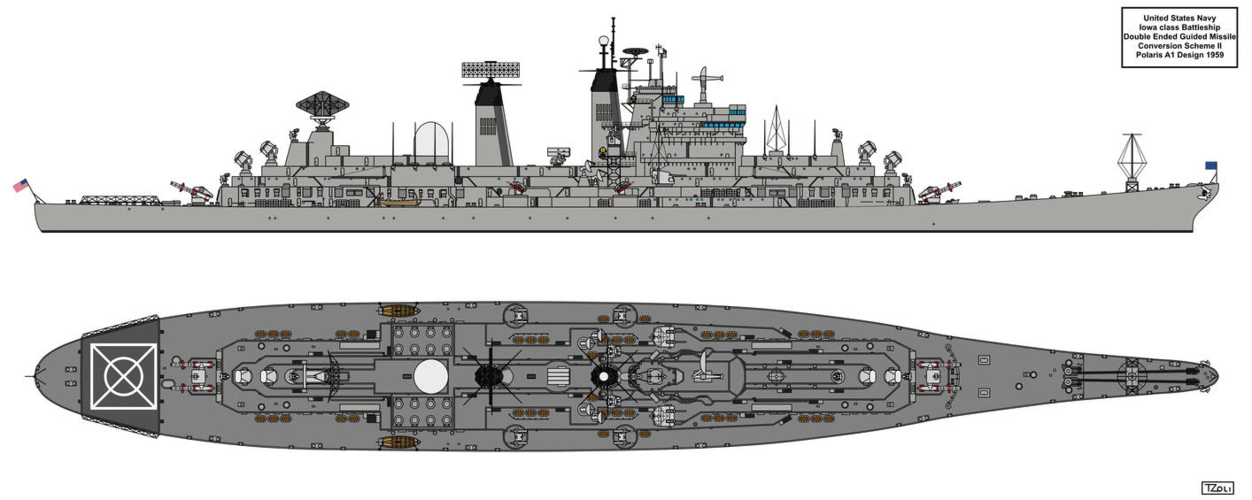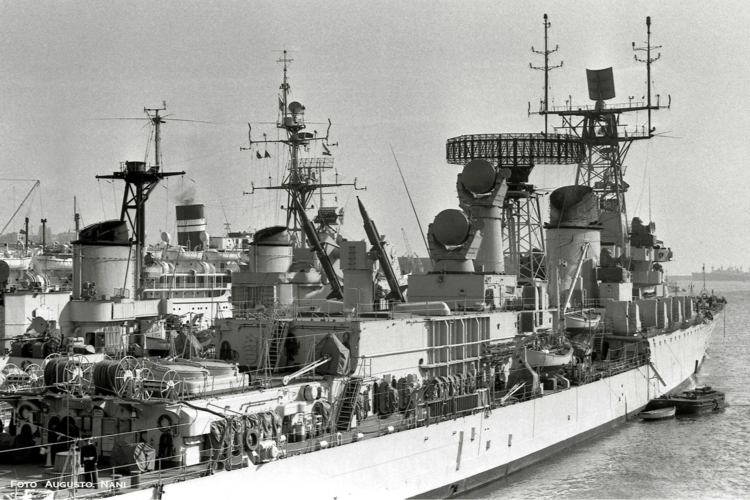I was debating whether this should go elsewhere, but it is vaguely related to the Iowa Phase II plans.
In November 1982, when the Iowa reactivations were just starting and the elaborate Phase II conversions still seemed possible, a naval architect by the name of Gene Anderson wrote
a short article for the US Naval Institute Proceedings proposing a class of "light battleships" built around the four turrets that would be removed from the Iowas in the Phase II process. As far as I know, this was strictly a private notion, not ever seriously considered, but it's interesting to look at.
The proposed design is ~9000 tons displacement, 400 ft length (oa), 84 ft beam, 22 ft draft. Hull shape is largely inspired by contemporary merchant ships (cruise ship bow above water and bulbous bow underwater), with protection consisting of an unspecified armored box above decks around the machinery and command and control spaces and the usual torpedo blisters, voids/fuel, and a triple bottom below the water.
Propulsion would be 4-6 medium-speed diesels, for 20-25,000 bhp, giving a speed of up to 25 knots (consistent with the need to escort 20+ knot amphibs of the era).
Armament obviously gets the most attention. As described:
- One triple 16"/50 turret, sited so it could traverse 270 degrees (blast overpressure on the superstructure would be fierce with the turret traversed fully aft...)
- Three to five Mk 45 5-inch guns, with some possibly replaced by Mk 48 8-inch guns or 155mm/50 Vertical Load Gun Mounts firing standard Army/Marine 155mm ammunition. (The drawing has three mounts that look like VLGM, which is probably the most "reasonable" choice here. Edit: Mk 48 is a mistake -- the author probably meant the Mk 71 8-inch lightweight gun.)
- Two Mk 26 launchers (which would certainly have been replaced by VLS if the design had been seriously considered)
- Two Phalanx CIWS. (As with other drawings from the era, the shape of Phalanx was not yet known, and an igloo-like structure can be seen standing in for it here).
Sensors are mostly unmentioned, and the drawing shows a fairly basic radar fit. (Taking full advantage of the Standard Missiles in the Mk 26 would call for at least New Threat Upgrade, I would think.) There is supposedly hangar space (in the hull, I assume) for two helicopters as spotters and for other duties as required, including ASW.
Manning is optimistically pegged at about 100 more than an OH Perry frigate (so about 320, of which about 25-30% would be required to operate the 16-inch gun turret.)
The
letters that followed this article were not kind...
I notice from that letter that there seems to have been another February 1982 article about a different (?) BB(L) concept in February 1982, but Google Books is being stubborn and won't find it for me.

